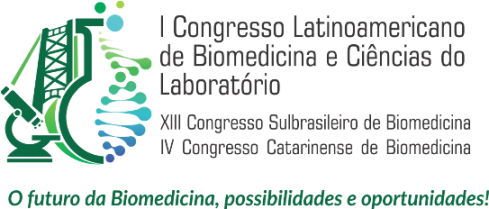Dados do Trabalho
Título
DETECTION METHODS OF ZIKA VIRUS (ZIKV) INFECTIONS - AN UPDATE
Fundamentação/Introdução
ZIKV is an arbovirus from the genus Flavivirus and family Flaviviridae, it is formed by a single strand of positive RNA with 10 Kb and a 40 nm diameter virion. Its replication cycle involves hematophagous mosquitoes, and its infections vary from subclinical cases to Guillain Barre syndrome in adults and fetal/newborns microcephaly. Considering the epidemiology of this virus and the lack of a defined diagnostic method, it has become necessary to evaluate its existing detection techniques.
Objetivos
To demonstrate the current methods used to directly/indirectly diagnose ZIKV infections.
Delineamento e Métodos
This is a literature review evaluating ZIKV infections diagnose methods. Data from six articles, published between 2015 and 2018, were obtained from SciELO, PubMed, Acta Médica Portuguesa, and Pediatric Brazilian Society. Descriptors: "methods, diagnosis and Zika virus".
Resultados
The infection can be tested by: RNA RT-PCR extracted from serum, saliva, urine, cerebrospinal fluid (CSF), semen, amniotic fluid, breast milk and macerated fetal and maternal placental tissue; Plaque reduction neutralization test (PRNT) to reveal anti-ZIKV IgM antibodies; Albumin-cytological dissociation analysis in CSF samples; Non-standardized in-house techniques screening for IgM and IgG antibodies; Whole blood viremia quantification; Microcephaly and intracerebral calcification association by magnetic resonance imaging; RT-PCR, histopathology and immunohistochemistry of the brain and umbilical cord of stillbirths; Anti-ZIKV IgM detection in serum or CSF by qualitative detection or MAC-ELISA; Virus isolation in LLC-MK2 or Vero E6 cells.
Conclusões/Considerações Finais
RT-PCR is more sensitive and specific, but it is expensive and requires extensive training, its use being limited to pregnant women and to the acute phase of the disease. PRNT and in-house serological tests may result in false positives for vaccinated patients or patients infected by other Flavivirus. An anti-ZIKV IgG test is only useful for serum prevalence population-based studies. The whole blood viremia quantification is feasible when its pros and cons are known. Viral isolation is difficult to do. It is clear the need of standardized, specific, simple, cheap, sensitive and without cross-reactivity serological tests, to be used in the public health system.
Palavras-chave
ZIKV, methods, virus, infections, diagnostic.
Área
Tema livre
Autores
Flávio Henrique de Lima Fernandes, Roger Luiz Rodrigues, Vivaldo Gomes Da Costa, Marielena Vogel Saivish, Letícia Menezes Freitas, Marcos Lázaro Moreli
